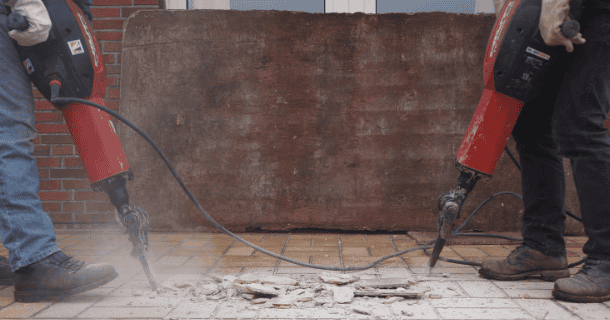
Stripping out a room or building comes with several safety hazards and risks. Piercing through a gas, plumbing, or electrical line poses a safety concern and has the potential to create costly damage. Exposure to silica dust, wood dust, and plasterboard dust that becomes airborne during demolition can cause short-term and long-term health issues. Other building materials, such as asbestos, have the potential to be deadly and must be removed by someone qualified. Leaving safe strip-out practices to the professionals is always the best practice.
A strip-out is the removal of any non-structural elements in a room or building.
Structural elements include solid walls (not including gyprock or drywall), columns or beams, foundation, and the ceiling support structure. These cannot be removed as part of a strip-out, as they are essential to the structure of your room. Making changes to these parts of your building is a much more hefty job and will require engineering approval.
Non-structural elements cover just about everything else. Countertops, built-in appliances, cupboards, tiling, water supply, plumbing, electrical work, and gas pipes are part of a strip-out in most kitchen renovations. Bathroom renovations also include the shower, toilet, sinks, baths, and towel racks.
Before beginning a strip-out, it is important to have professional licensed tradespeople shut off the electricity, water line, and gas line. This will prevent any dangers of electrocuting yourself, bursting a water pipe, or causing a gas leak if you were to accidentally breach one of these lines.
If you’re remodelling a kitchen or bathroom, you’ll likely come into contact with all three of these lines. However, it’s just as important to disconnect everything, even if you aren’t working in a kitchen or bathroom. You never know where a gas, water, or electrical line may run through in your building. Even if you’re not planning on removing anything that might cover a pipe or wire, accidental damage could happen at any time, and you wouldn’t want to pierce through a surface that has piping or wiring behind it!
The types of dust that become airborne during a strip-out are much different from the standard household dust that you might find on your closet shelves or skirting boards. They are also much more hazardous to your health, and precautions should be taken to create a suitable, safe working environment.
Silica dust can be found in concrete, bricks, tiles, and certain types of stone benchtops. Silica dust is highly dangerous and can cause chronic respiratory issues, silicosis, and lung cancer.
Found in all types of wood, it is often exposed during cutting, sanding, and demolition. Exposure to wood dust can lead to respiratory irritation, lung disease, and in some cases, nasal cancer (especially with hardwood dust).
Dust that is created from plasterboard and Gyprock can cause respiratory irritation, although in some cases it can cause long-term issues such as asthma or chronic obstructive pulmonary disease (COPD). Some plasterboards can also contain silica.
Wearing a protective respirator mask is essential to protect yourself from dust exposure. However, considering the potential severity of some of these types of dusts, it’s safest to contact a professional strip-out company that can use dust-free tile removal techniques.

Asbestos started being used in Australia as early as the 1880s. However, it wasn’t until the 1920s that it became a much more popular choice of building material. It was commonly used for pipe and wall insulation, roofing sheets, fencing, ceiling tiles, floor tiles, plaster, and fireproofing around stoves. Asbestos was phased out in Australia in the 1980s, however it wasn’t made illegal until December 2003.
Asbestos demolitions and strip-outs are extremely dangerous, there is no ‘safe’ or ‘acceptable’ level of exposure – it should be avoided at all costs. If you’re considering a domestic strip-out, we can assist you with safe asbestos removal with prior arrangements.
Strip-outs can be hazardous work. There are risks involved with pipelines, electrical wiring, dust inhalation, and asbestos building materials. Some risks can be easily managed, while others are best left to the professionals.
Get in touch with our friendly team if you’re unsure about any potential risks associated with a strip-out in your domestic or commercial building. With over 20 years of experience, we’re here to help you get the job done safely!
Read more on our other blogs: